Any voyage is shorter if someone joins you. Together with our volunteers, including our son Aytegin and his friends Luka and Kunduz, we reached our destination of Lake Issyk-Kul, 300 kilometres away, pretty soon. Our companions on the trip were young musicians and DJs, so our car during the journey was filled with performance, rap, songs, jokes and much laughter. April was quite cold this year and our trip to plant some trees, take care of our garden there and continue building the eco art residency was unusually late.
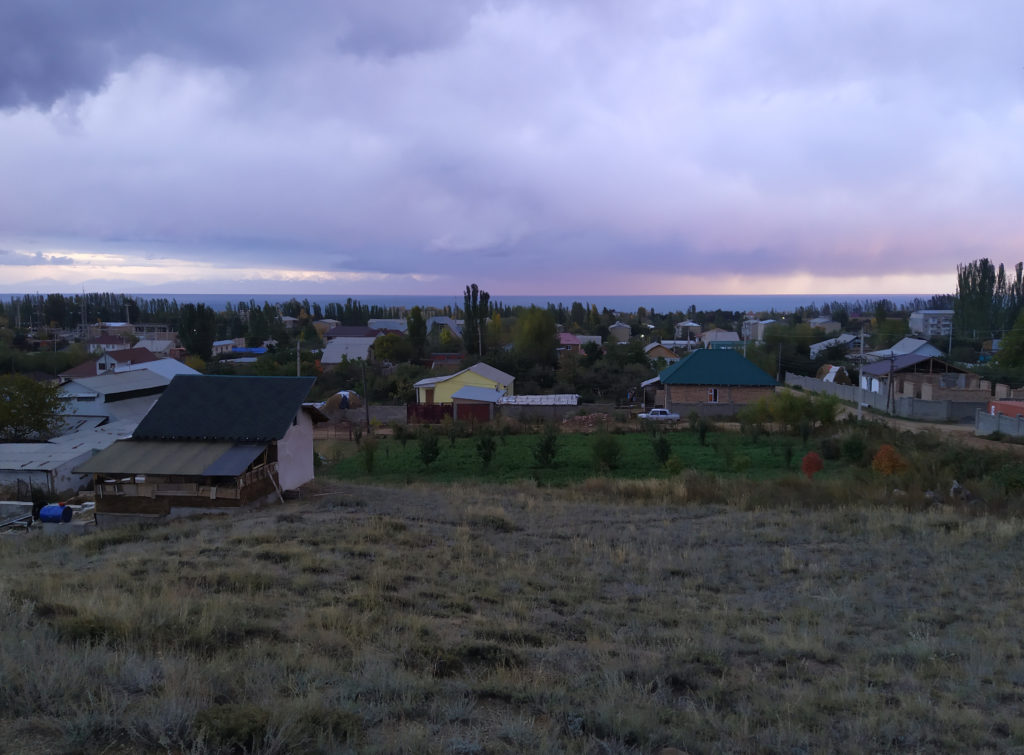
This land in the village near the lake was inheritance from our parents more than twenty years ago. For many years we had no opportunities to develop this land and just occasionally met people who introduced us to the idea of permaculture. At almost the same time we met architects who use sustainable technologies to build houses with local materials: straw, cane, clay, sand and stone. “It is a sign,” we thought but did not expect how many signs we would get later when we began to build a house and garden in the village.
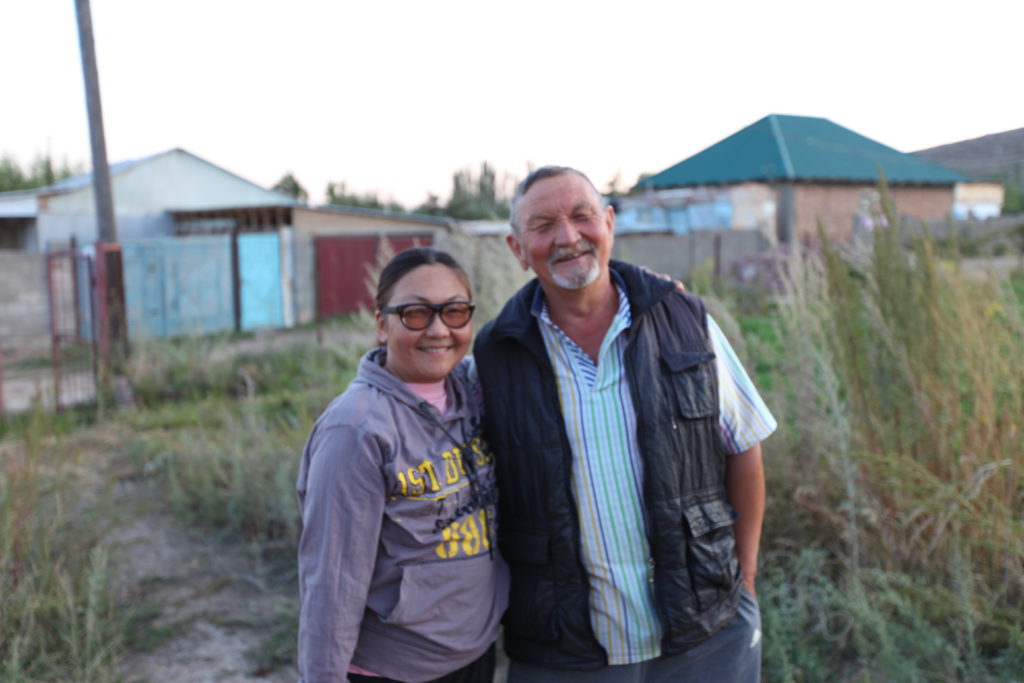
“Do not choose a house, choose neighbours,” as the proverb goes. We are lucky that our neighbour Salamat-bayke always waits for us. He takes care of the site in our absence and feeds our small dog there. We try to help him too; the retired military officer is getting old and it is not the best time of his life: he lost his wife last year. This time, we brought some stuff for his garden and some Kyrgyz delights he usually likes. We were talking about the gardening and he shared some advice on how to do something. We bought a few apricot trees from him and hope it is not too late to plant them.
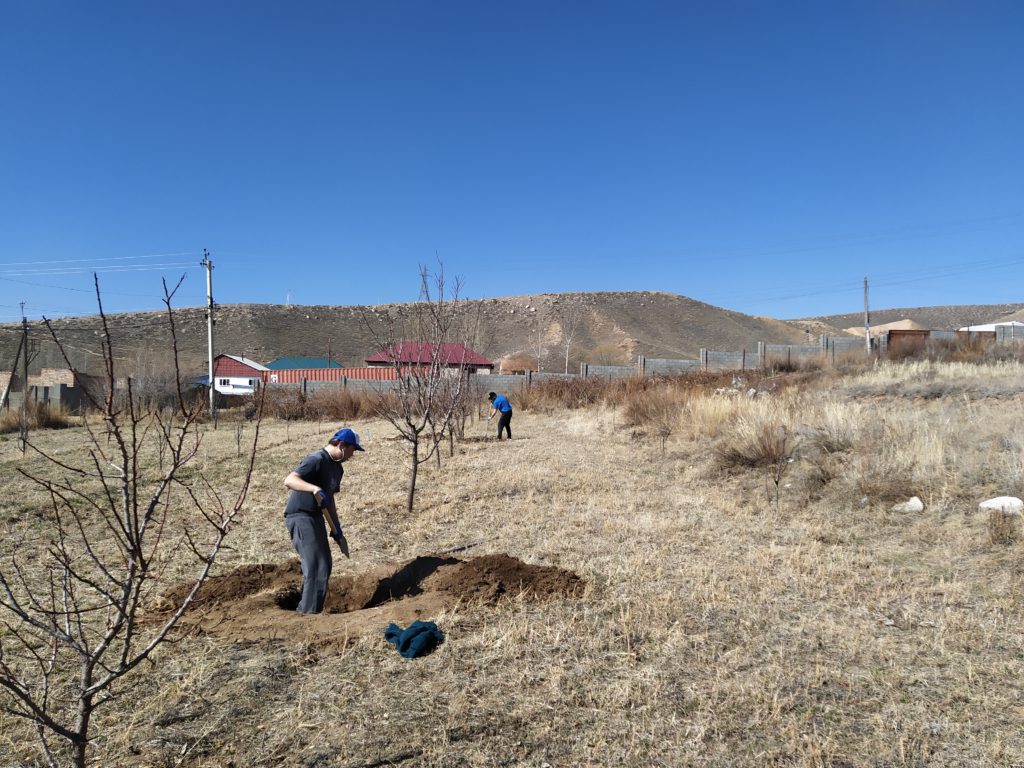
Our volunteers are not so familiar with gardening and it takes time to explain and show them how to plant trees. We already planted apple, cherry, pear and hazelnut trees in the garden a few years ago. At that time Salamat-bayke gave us a good piece of advice to plant clover between the trees. It was a really brilliant insight, because clover being a pioneer plant is one of the best ways to enrich soil and protect it from drying out. We also made arrangements with another neighbor, Azamat: we agreed that he could cut the clover to feed his cows but he would irrigate our garden in return. The water for the irrigation canals comes approximately only once a month but we could not always be in the village to receive it.
Water access is becoming a real problem in Central Asia. The glaciers are melting due to global warming and transnational gold mining companies are destroying the eco-systems of the mountains. Dry seasons are getting longer and the water level in the power stations gets lower every year. It could cause dangerous consequences in all spheres of life due to energy collapse, poverty and migration. Moreover, Kyrgyzstan is the source of water for the agricultural region of Central Asia and a lack of water would provoke further conflicts among the countries. There was already a military conflict on the Tajik-Kyrgyz border at the end of April. The major cause was water control and distribution in the Fergana Valley. It is sad that civilians from both sides of the border were the main victims.
The altitude of Lake Issyk-Kul is 1,608 metres above sea level and the sunlight is strong here. It is important to use solar energy to heat water. This time, we were busy with arranging a low-tech solar shower. We used a black 300-litre iron tank placed on a welded iron construction and then covered with metal sheets. We will connect the tank with a water pipe upon arrival next time. Used shower water could be one of the sources of irrigation for our garden. Saving rainwater and using so-called “grey water” (wastewater) is one of our ideas and challenges for our future art residency.
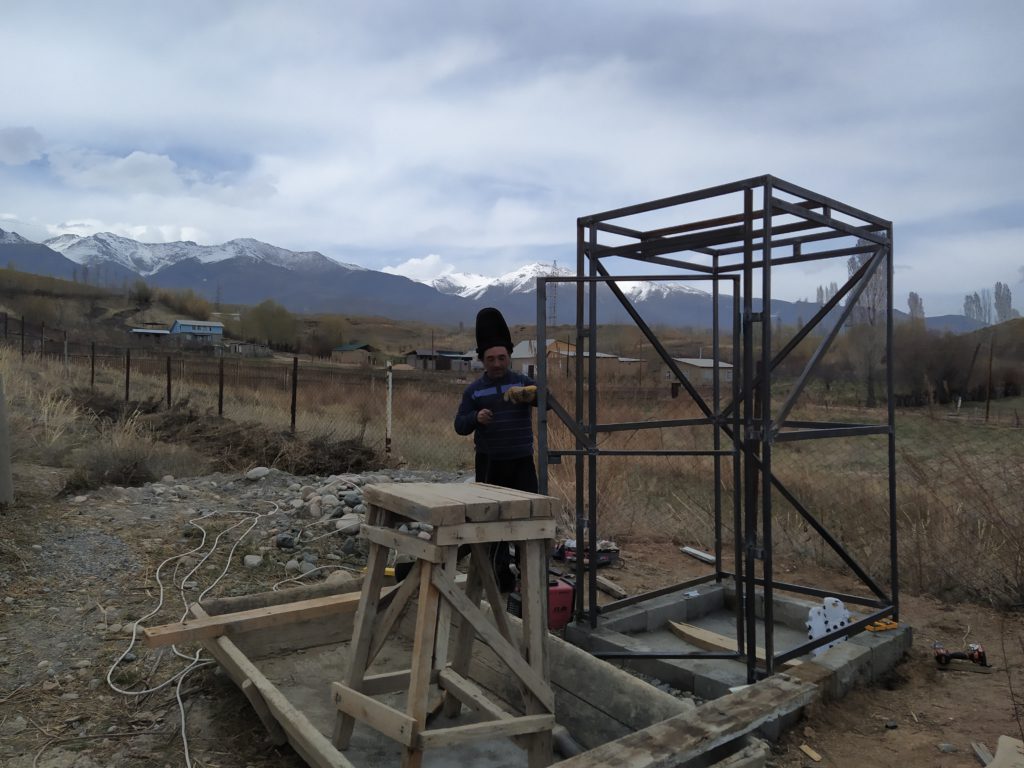
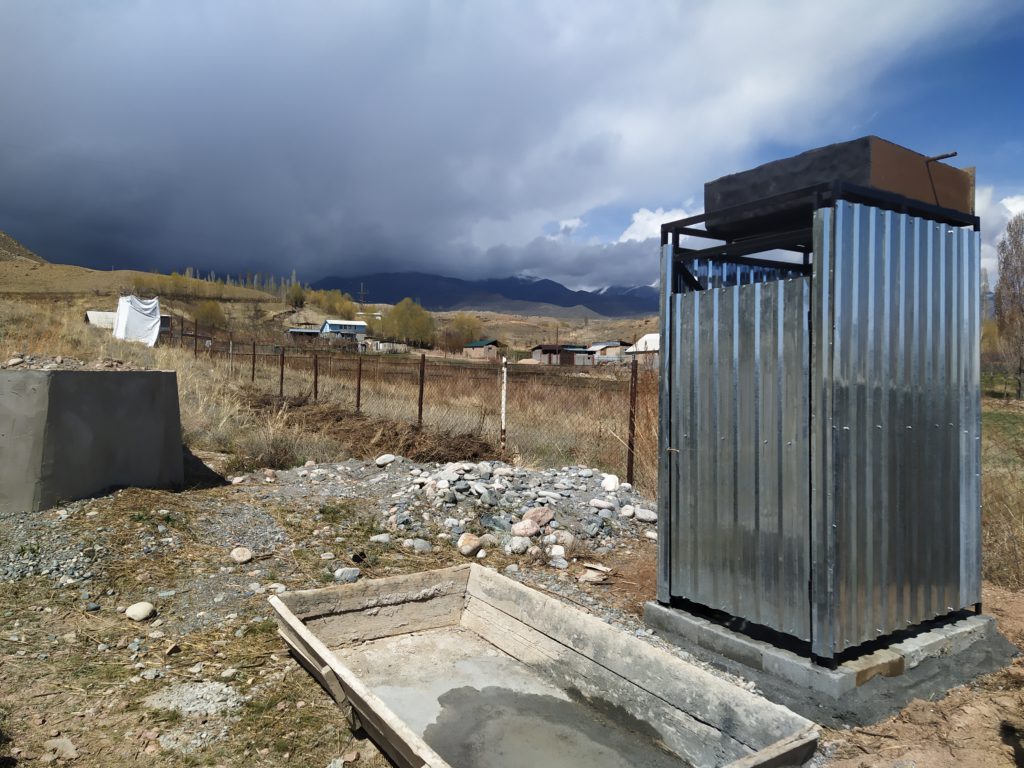
Our volunteers were very curious about our plans to build an eco art residency. We introduced them in detail to the principles of permaculture and straw bales houses. We had already made a one-room house to test the wooden construction, straw bales and cane insulation. We collected glass bottles left by tourists every hot season and tried to make floor insulation. Bottles with a special square shape became a stained–glass window in our bedroom upstairs. The village has no recycling infrastructure for glass or plastic bottles, which leads to pollution.
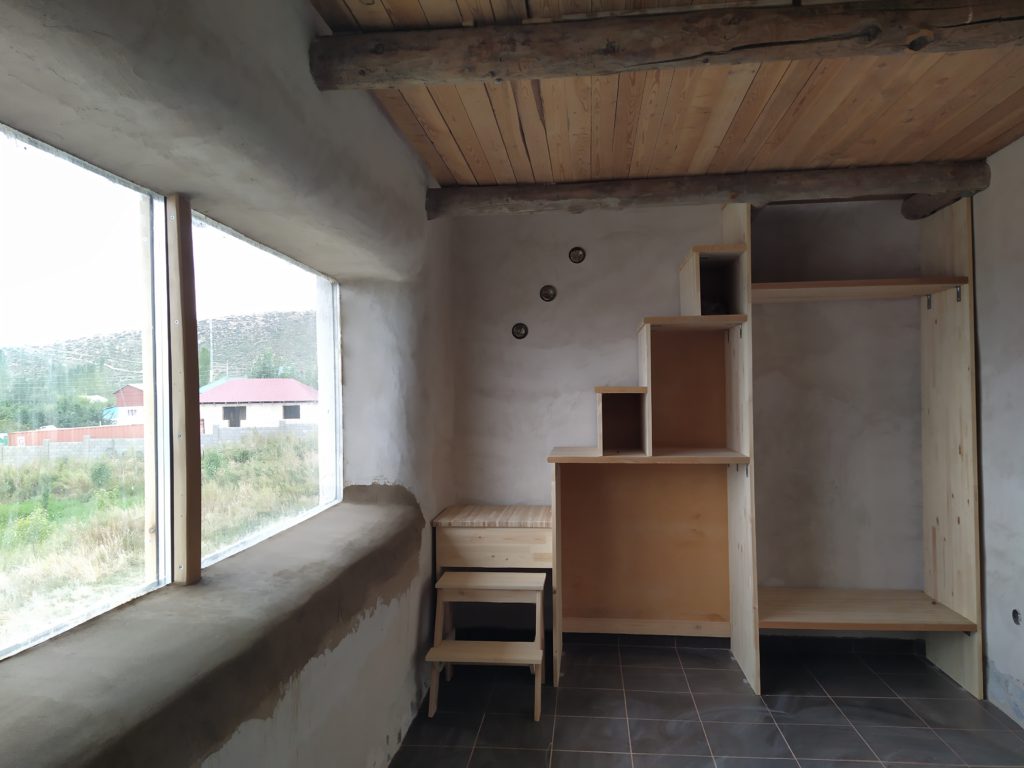
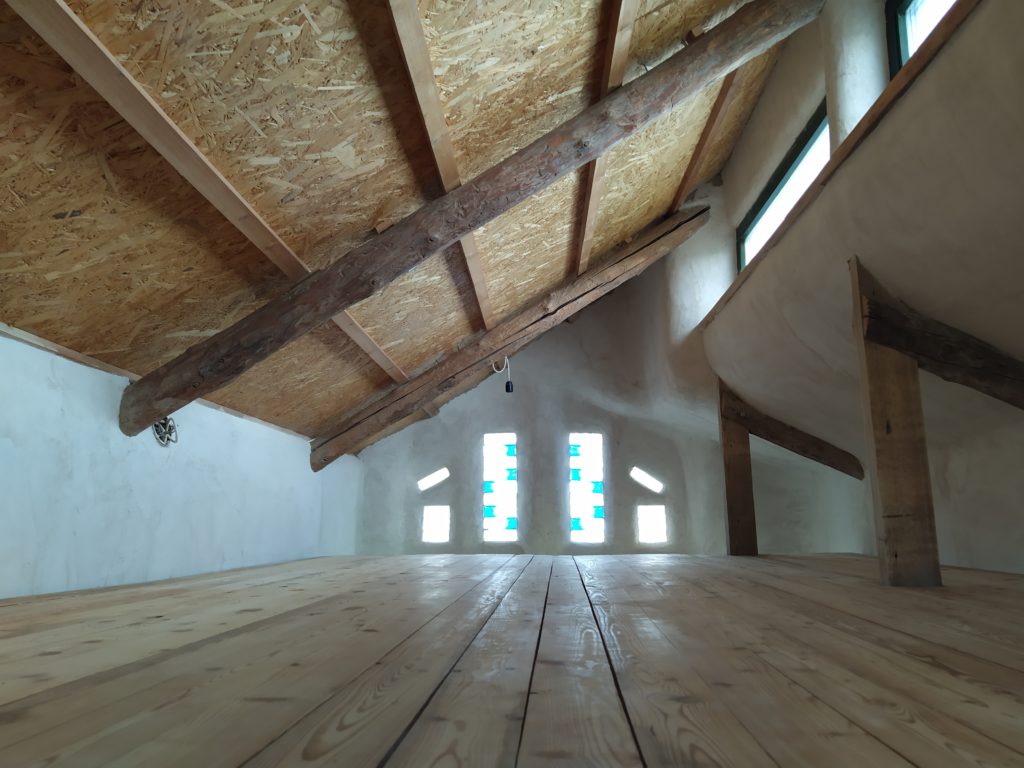
We did almost everything ourselves, assisted by our volunteers. It is important first to make a strong wooden structure. Using old wood from demolished buildings was a good solution for us: it is cheap and dry and also reduces our contribution to deforestation. Straw bales are also a smart solution for building: they are a cheap, eco-friendly material available locally that also offer perfect insulation. We bought bales from the farming family who introduced us to the principles of permaculture and straw-bales construction. We became friends and continue to learn many important things from them.
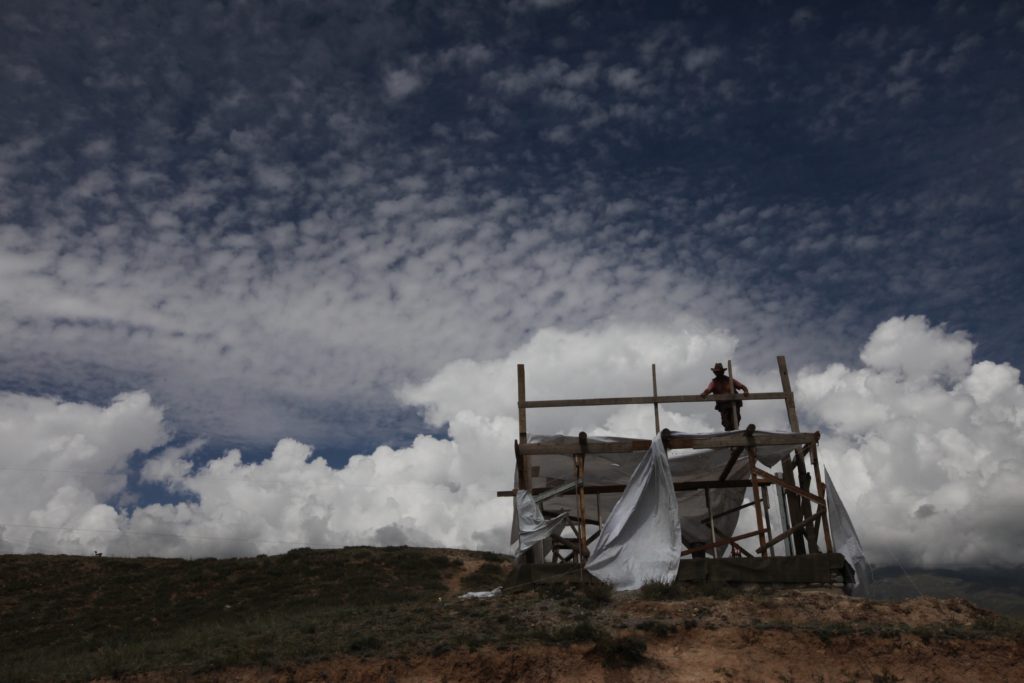
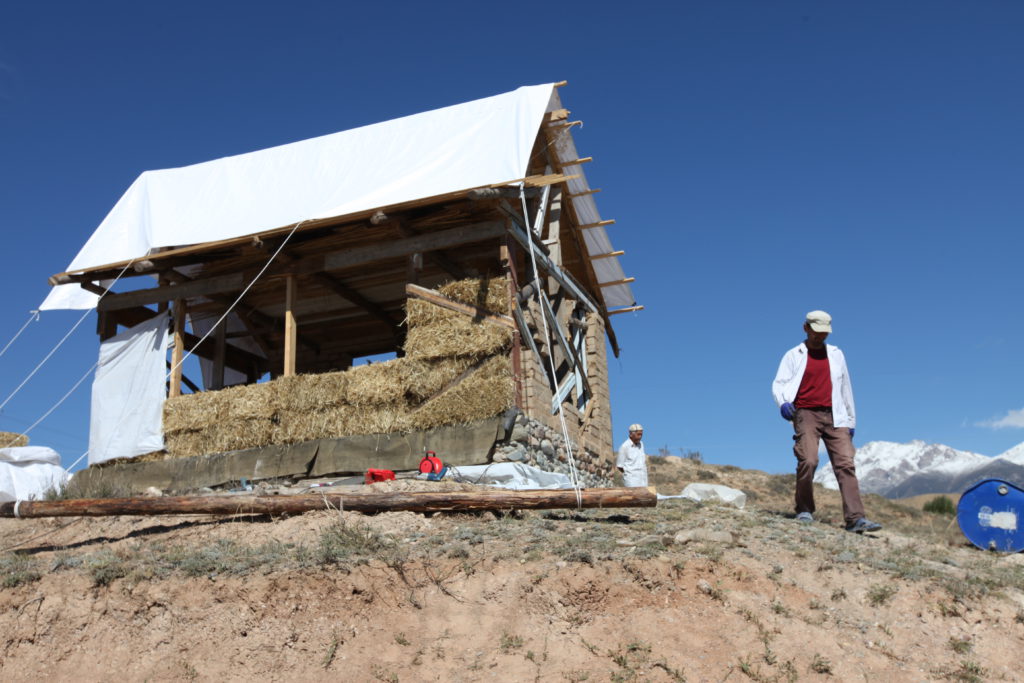
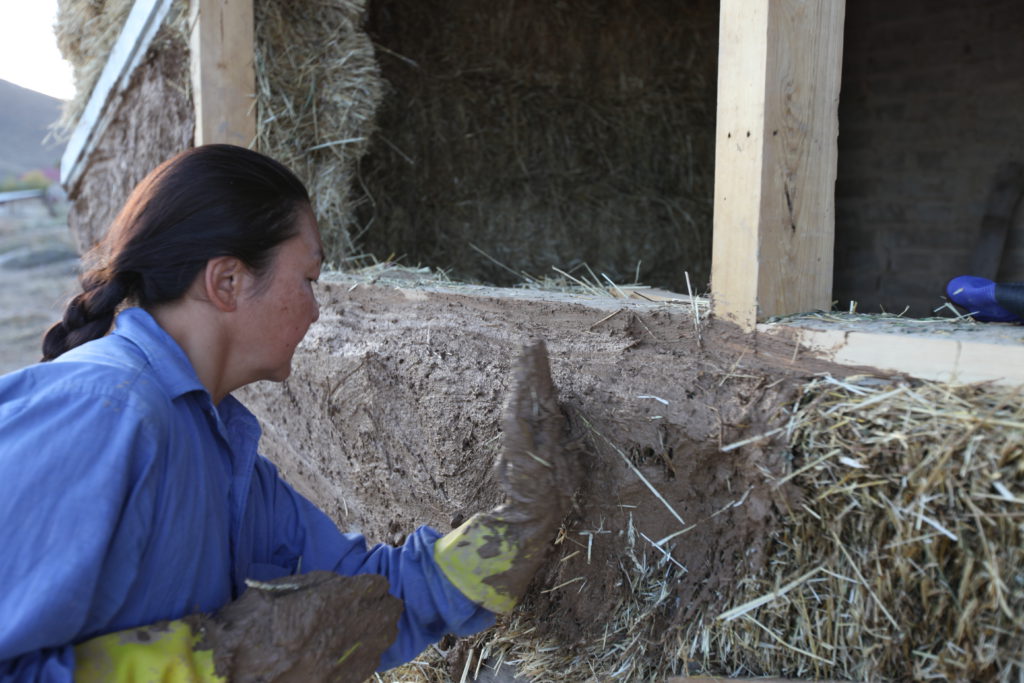
It is slow work with almost shamanic rituals. The entire process is very similar to making a big sculpture with soft and almost human-like shapes. Covering the structure with several layers of clay and sand is very important. Clay protects the straw from humidity, mice and fire. For us, it is also a very symbolic material with many cultural connotations. Years ago, we made clay installations. It references a very deep human feeling and worldview. Clay is also one of the most ancient building materials, particularly in the dry climate of Central Asia.
The ten days of the workshop passed quickly. We then had to go back to the polluted and busy city. When we were getting ready to leave, suddenly we noticed that the apricot trees had started to bloom. It is a good sign, we decided and began our journey to Bishkek.
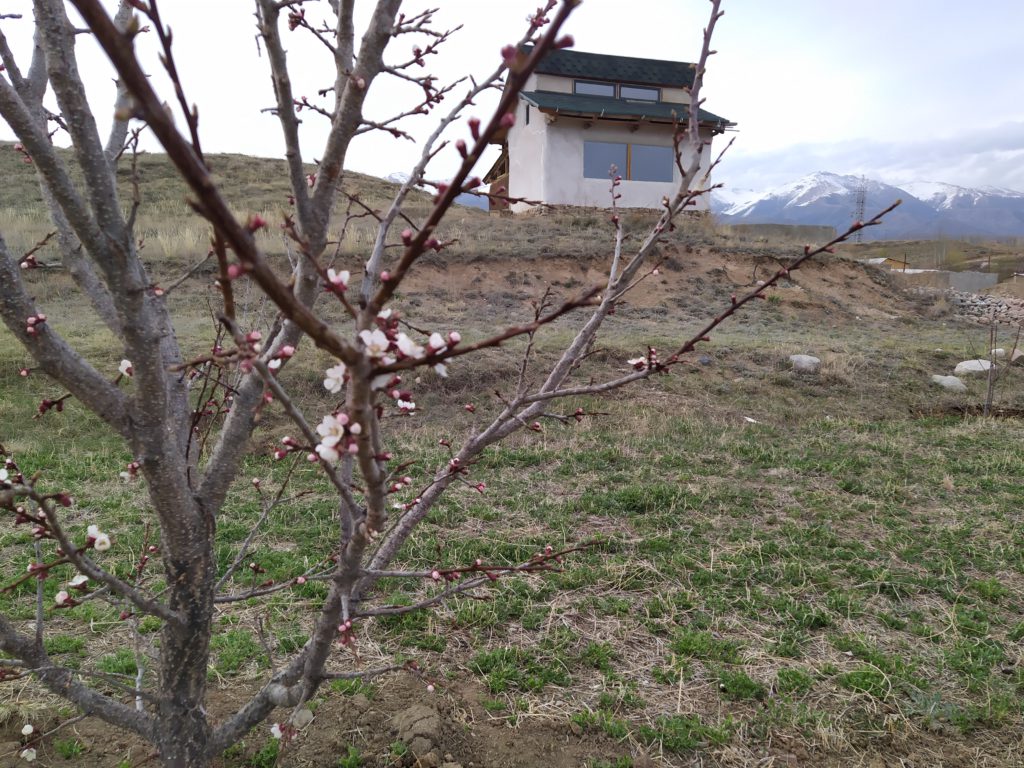
- License:
- CC-BY
